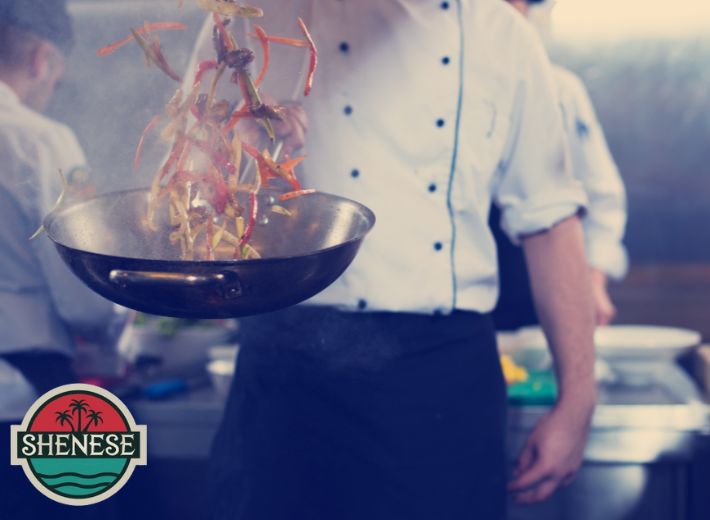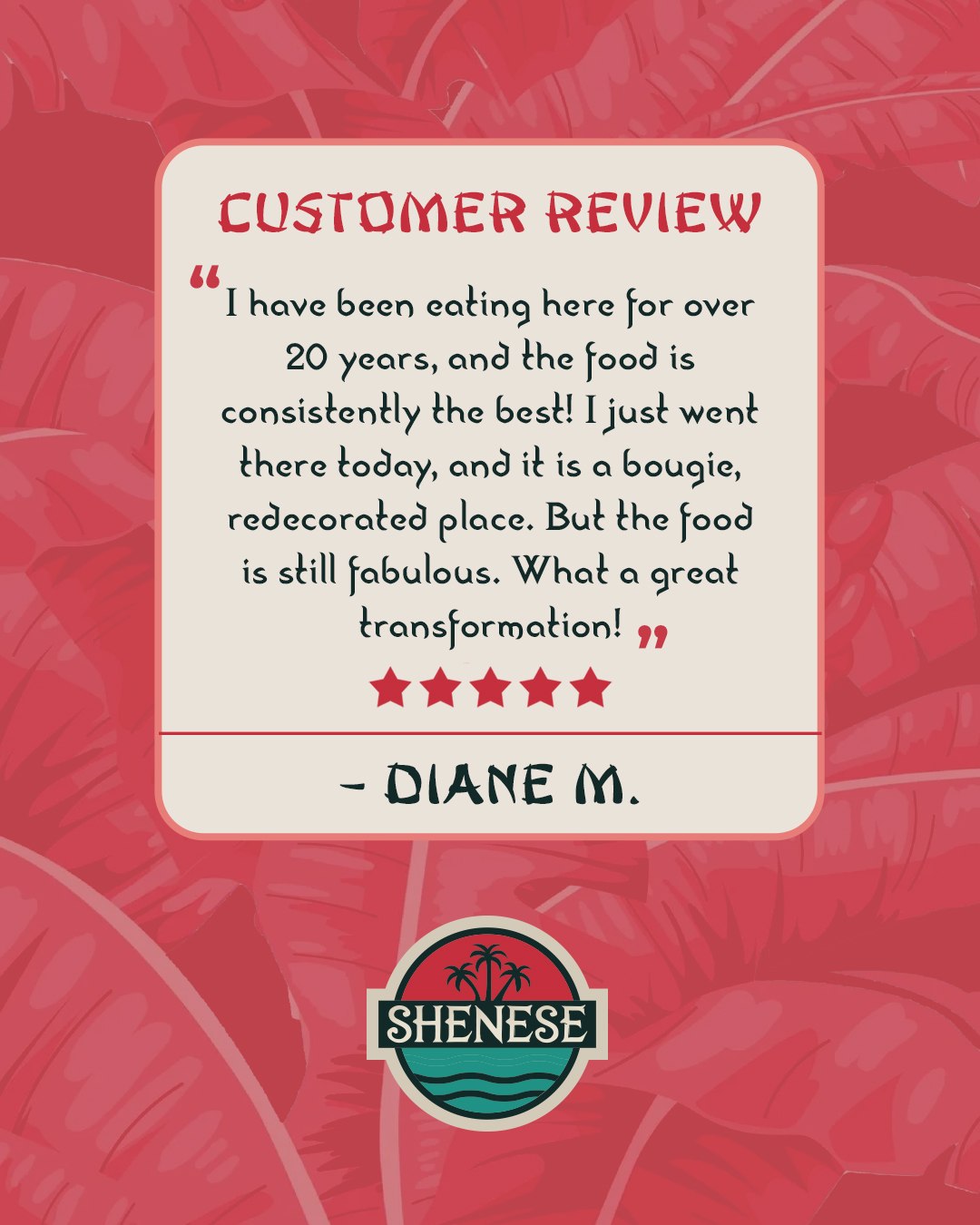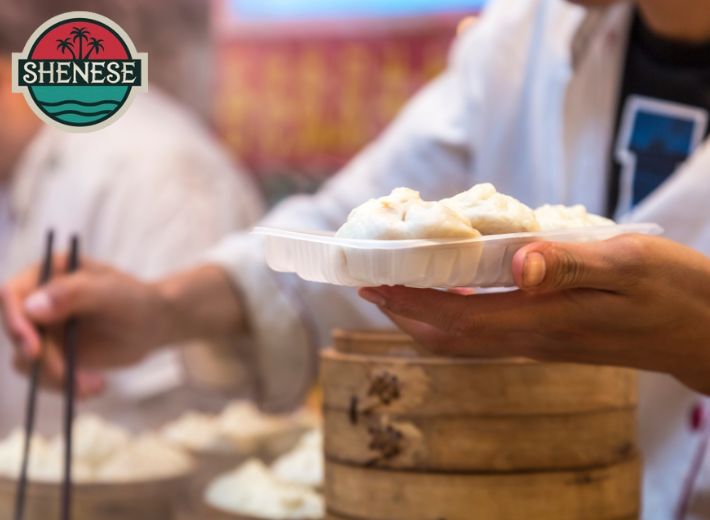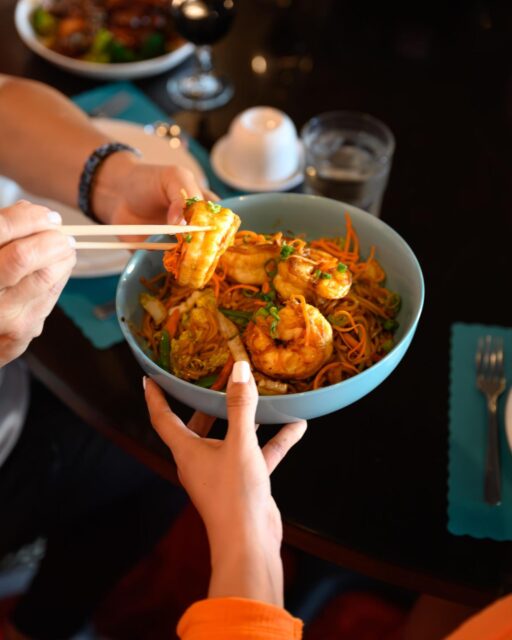Many often overlook the humble wok as an essential part of their culinary inventory, but once someone starts cooking with a wok, they often wonder how they ever lived without it. From flash-frying and steaming to stir-frying and smoking, the wok is a cornerstone of Chinese culinary technique, offering incredible efficiency and flavor development. At Shenese, the wok takes center stage in the kitchen, used masterfully to create many mouthwatering dishes on our traditional Chinese menu. With the right skill and high heat, our chefs transform fresh ingredients into delectable, perfectly balanced meals that celebrate the authenticity and nuance of Chinese cuisine. Discover the versatility a wok has to offer here.
Though it seems like a specialized piece of cookware, a wok is extremely versatile and useful in every kitchen. Originating in Chinese cooking, a wok is a conical-shaped pan with deep sides. That shape makes it ideal for a wide range of cooking tasks, including frying, simmering, boiling, and stir-frying.
Woks are used throughout the world, but especially in East Asian kitchens. We’re partial to carbon steel woks (more on that below), and our newly redesigned Carbon Steel Wok—featuring seasoned carbon steel, a wider rim, a newly ergonomic handle, and an overall lighter product—makes it even easier to take out of the box and start cooking.
Table of Contents
- What Is a Wok?
- Benefits and Advantages of Cooking with a Wok
- How to Choose the Best Wok
- How to Season and Maintain a Wok
- How to Cook With a Wok
- Ready to Shop?
What Is a Wok?

A wok’s unique design makes it extremely useful. With tall sides slanting down into a cone shape towards the bottom, a wok features ample cooking surface area. The slanted sides also trap heat, reducing your cooking time and making it easy to quickly and evenly stir-fry or sauté vegetables, proteins, and rice. The sloped sides also mean you can comfortably toss and flip food in the wok without worrying too much about food spilling all over your stove.
But you can do way more than stir-fry in a wok. The wok’s tall sides, compared with a skillet, for example, make it easy to steam, braise, and deep fry all sorts of food. The carbon steel responds quickly to changes in heat, too, compared with heavier cast iron.
Benefits and Advantages of Cooking with a Wok
A carbon steel wok will give you superior heat distribution and retention, letting you cook food quickly at high temperatures. Don’t be afraid to let things get a little smoky! The high heat cooking is what gives Chinese food its flavor, known as wok hei, aka the “breath of the wok.”
The wok’s deep shape also reduces oil splattering and promotes even cooking. A wok is great for a stir-fry, but also works wonders when steaming, deep frying, boiling, and braising. We’ll dive into specific examples below.
How to Choose the Best Wok
“I think the fact that Chinese restaurants only use carbon steel woks tells you everything,” wok expert Grace Young said in a Serious Eats interview. And she’s right, of course—carbon steel heats evenly, retains heat, and is heavy-duty enough to cook over high heat without worrying about damage. Still, you might run across other wok materials and wonder if they’re worth considering. We’ve got a rundown of each type of wok below.
Material
Carbon Steel Woks – We are unabashedly biased toward carbon steel. Not only does this traditional choice heat quickly and retain heat, but carbon steel also develops a seasoning the more you use it, rendering the surface virtually non stick.
Cast Iron Woks – While cast iron woks also retain heat well, they are much heavier, making them trickier to maneuver when cooking. (Especially if you’re lifting the wok to flip and toss ingredients around.)
Stainless Steel Woks – Though they’re a durable, modern option, stainless steel woks are less common. Since they won’t develop a seasoning like carbon steel and cast iron, you’ll need more oil when cooking. Stainless steel can also get too hot, which can cause splotches and spots on the surface.
Non Stick Woks – Non stick is great for some types of cookware, but when you use a wok, you’re probably cooking over high heat, which isn’t ideal for non stick coatings. (Non stick is safe up to about 500F, while carbon steel can handle up to 1200F.)
Size and Shape
When it comes to size, you want to make sure your wok is big enough to be useful—no sense in getting a small wok that will require multiple batches for a simple stir-fry—but not so big that it’s unwieldy. Our new wok is ideal for a home cook, with a diameter of 13.5 inches across the top and a cooking surface diameter of 5.5 inches.
You’ll also see different styles of handles, most often two small loop handles on either side, a long handle, or both a long handle and a small helper handle. We prefer woks with a long handle, as this makes it easier to lift the wok and flip food during cooking. With our redesigned wok, we’ve added our signature Stay Cool Handle, so you can flip and maneuver your food while protecting your hands from the heat.
While round-bottom woks are traditional, you need either a special stove or a ring to adapt a round bottom to work on a Western-style stove. Our wok has a flat bottom, making it compatible with a range of stovetops, including induction.
How to Season and Maintain a Wok
Since our new wok comes pre-seasoned with a mixture of shea nut oil and coconut oil, the hardest part of cooking with a wok is done for you. Simply take the wok out of its box, give it a light wash with warm water, then dry it off and set it on the stove over low heat until it dries completely.
If your wok needs to be reseasoned, you can follow the same steps as our other carbon steel cookware: make sure it’s clear of stuck-on residue, then use either the stovetop or oven method to apply a few layers of seasoning.
Just like our other carbon steel cookware, it’s important to properly clean and store your wok. Always remove food residue from the pan, using salt or more abrasive steel wool if needed (in which case you’ll want to reseason the wok after). You shouldn’t need to use too much soap, but a little now and then is ok. Most importantly, always thoroughly dry the wok with a towel, then set it on low heat on the stove to completely dry. You can also buff a small amount of oil into the surface, which acts as a protective layer against moisture.
The more you cook with your wok, the better its naturally non stick patina will be. Keep reading to learn a few essential cooking techniques—including one that will definitely build that patina quickly.
How to Cook With a Wok

As already mentioned, woks are ideal for stir-frying. You’ve probably attempted a stir-fry in a skillet before, only to be met with some level of messy disaster when you realize you’ve overfilled the pan and there’s no way the contents will get that signature crisp-tender, lightly charred look of a good stir-fry. (Just me?) Do yourself a favor and use a wok to stir-fry—here’s how.
Since your wok should be extremely hot for stir-frying, you’ll want to have all your ingredients prepped and ready to go before you start. Also key with high-heat cooking: the right cooking oil. Choose one with a smoke point above 400F, like peanut, grapeseed, or sunflower oil. It also helps to make sure your ingredients are as dry as possible, so they’ll start charring and searing once they hit the pan, rather than steaming.
If you’d like to quickly build up the seasoning on your wok, then use it to deep fry. (Consider this your excuse to deep fry something.) The wok’s shape means you’ll need less oil, and the wide top surface area helps prevent overcrowding. Plus, as you add your ingredients, a wok will retain heat well, leading to less temperature fluctuation as you add ingredients. You can deep fry anything from chicken to tempura in a wok.
As mentioned above, woks are excellent for steaming, too, particularly if you’re using a bamboo steamer basket, which is designed to fit inside woks. To steam with a wok, bring a few inches of water to a boil over medium heat, set your basket on top (making sure the water doesn’t touch the bottom of the basket), then add your food, reduce the heat to maintain a simmer, and let the steam do its thing.
You can also boil and braise in your wok, thanks to the ample cooking space and prime temperature control of carbon steel. You can even fashion a wok into a stovetop smoker, with lots of foil, a sheet pan rack, and your preferred type of wood chips.
The wok opens up a whole new world of culinary creativity, allowing any cook to experiment with bold flavors, quick techniques, and authentic dishes with its unique design and versatility. The wok is arguably essential for achieving that irresistible sear, texture, and depth in traditional Chinese cooking. At Shenese Chinese Restaurant, the wok is a gateway to a truly exceptional dining experience. Come and taste the difference yourself and explore a menu created with passion, tradition, and the unmistakable flair of wok-fired perfection. Visit Shenese today for a meal as unforgettable as it is delicious. Call us at 561-482-1086 or reach out to info@EatShenese.com
Reference: [ https://madeincookware.com/blogs/what-is-a-wok?country=US#what-is-a-wok ]
























